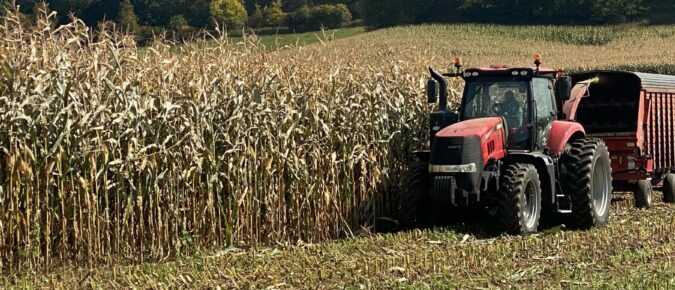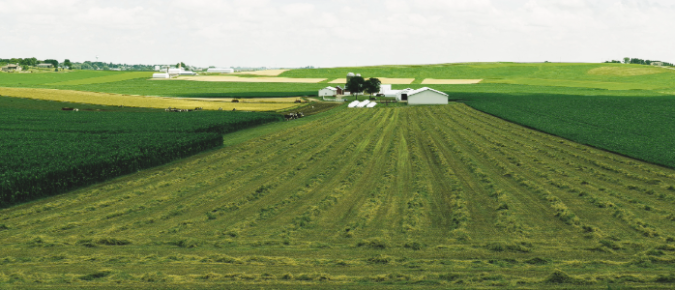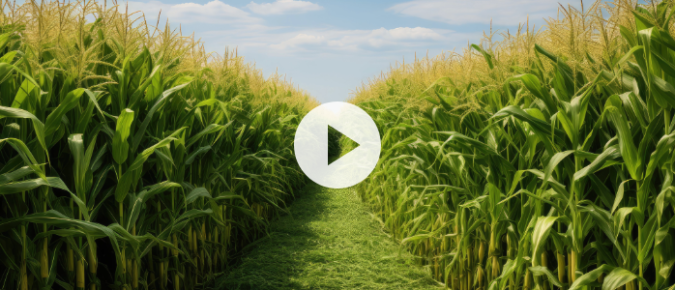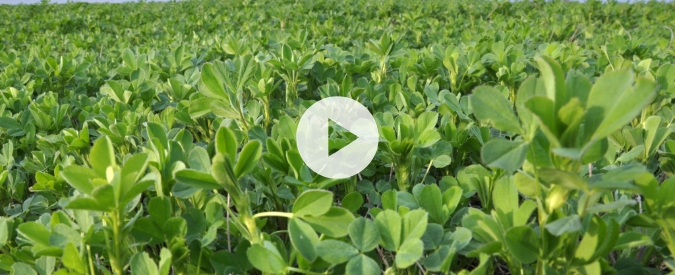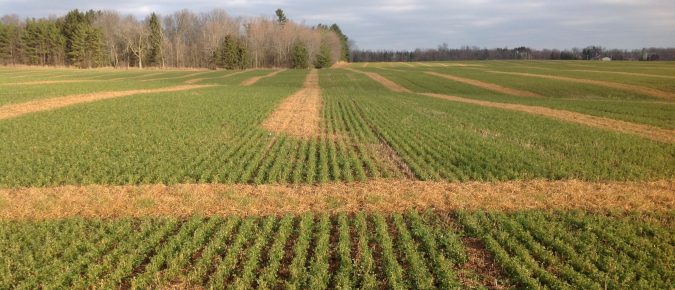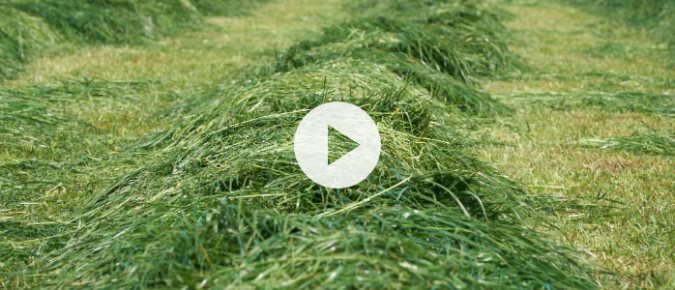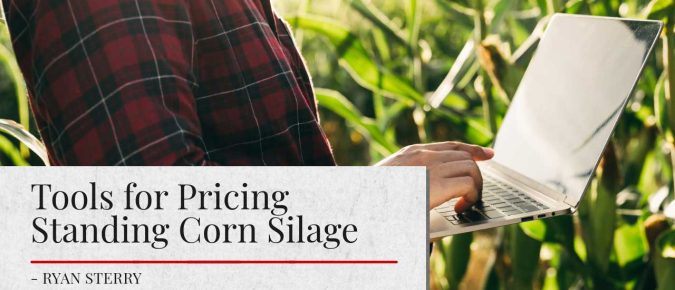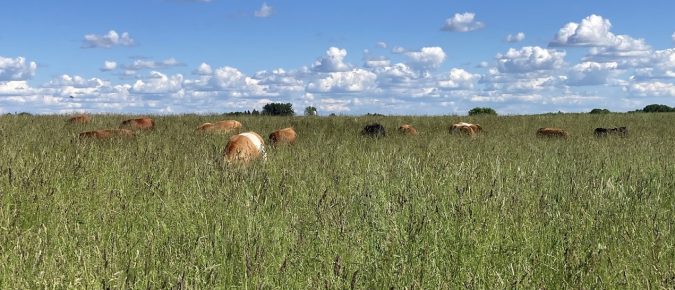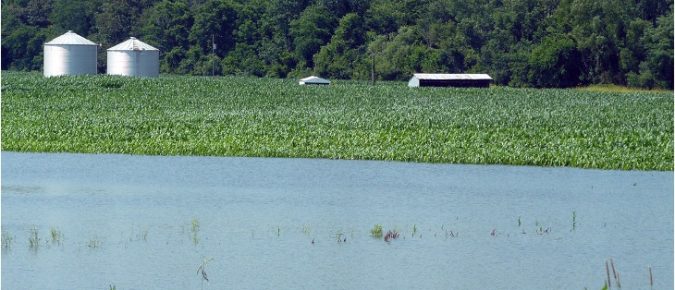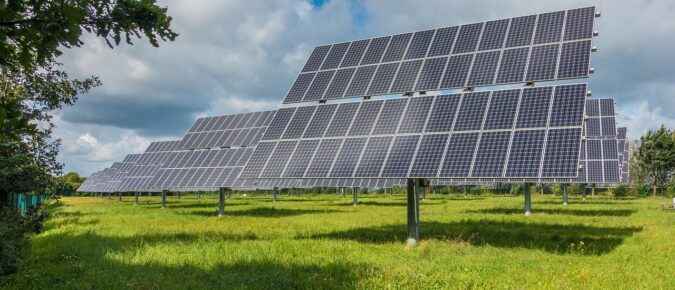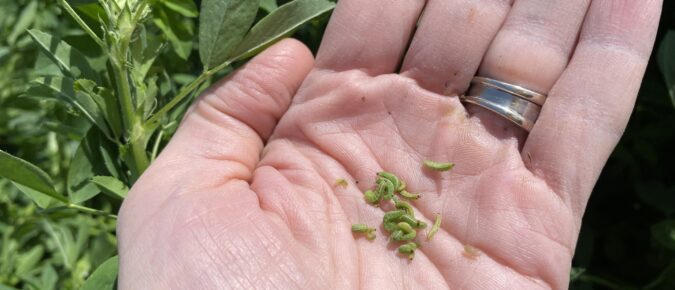We’re starting to see some foliar diseases come into corn in WI, which may affect harvest timing and management. We’re not overly concerned; however, the time is right to be proactive and scout, scout, scout!
From various research efforts into the physiology of alfalfa winter survival, it appears that many of these root reserve compounds are positively linked to winter survival, so preserving them can aid our alfalfa stand in surviving winter and thriving the following spring. Manipulating the time of fall cutting allows us to control the stores of these compounds to give the best chance at winter survival of our alfalfa stands.
The August 14 Badger Crop Connect webinar featured Dr. John Goeser, Animal Nutrition Lead for Rock River Lab; Consultant for Cows Agree Consulting; and adjunct assistant professor in the UW–Madison Department of Animal & Dairy Sciences. Dr. Goeser reflects on the corn silage growing season to this point and offers late season and harvest management options.
The August 14 Badger Crop Connect webinar featured Scott Newell, alfalfa outreach specialist with the UW–Madison Division of Extension. This year (2024) has been very challenging to manage alfalfa with rain throwing many cutting schedules off the rails, leaving producers with lower quality forage than expected and trying to catch up with higher quality harvests. Scott Newell discusses the potential implications of this and the importance of managing for persistence in alfalfa to maximize overall productivity.
As we head toward the end of summer, we are closing in on time for a late summer alfalfa establishment. Commonly in Wisconsin, this is done following a wheat crop in the spring. This can lead to a few challenges to consider: residual herbicide carryover and the effects of volunteer wheat on successful establishment.
DON (deoxynivalenol or vomitoxin) is a mycotoxin produced by the fungus responsible for Fusarium Head Blight (FHB), a common and economically important disease in small grains. DON is a problem because it is toxic to humans and animals. Grain grown on-farm and fed to livestock should be managed properly to avoid negative effects.
The July 10 Badger Crop Connect webinar featured Jose Franco, a research agronomist with the U.S. Dairy Forage Research Center (USDA). Jose summarized current research efforts at the U.S. Dairy Forage Research Center on cover crops and continuous living cover. Ongoing research includes cover crop breeding efforts, work on alternatives to winter cereal rye following corn silage and some of the benefits of including flowering cover crops, and a whole systems approach to dairy forage systems evaluations.
Tools are available to help corn growers and dairy and livestock producers negotiate a fair price for corn silage.
Each year the question “Should I clip my pasture?” rekindles an age-old debate at a pasture walk. The debate is never quite settled because there is no straightforward answer.
Farming is a business that cannot avoid weather risks. A significant challenge farmers face is dealing with excessive water, especially flooded and saturated soil.
The explosive growth of solar sites, especially large, utility-scale (>100 MW) sites that require state approval, has put solar in competition with agriculture for land use. Solar grazing increases land use efficiency, yielding two outputs—sheep products (meat/dairy/wool) and solar electricity—where there would otherwise be just one.
Alfalfa is a valuable forage crop in Wisconsin that supports dairy and livestock production. Alfalfa can be threatened by the alfalfa weevil (Hypera postica), an early-season pest that feeds on alfalfa leaves and may severely damage first-crop and second-crop alfalfa fields.

